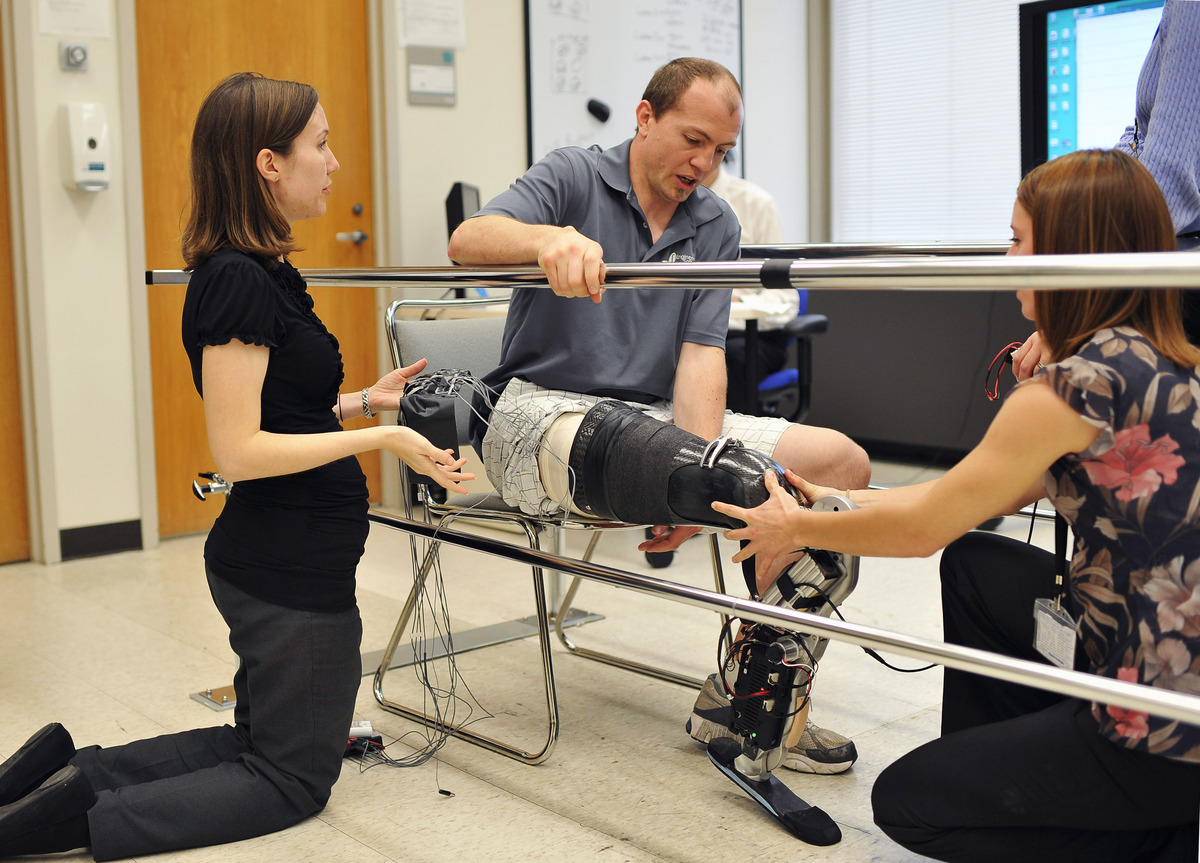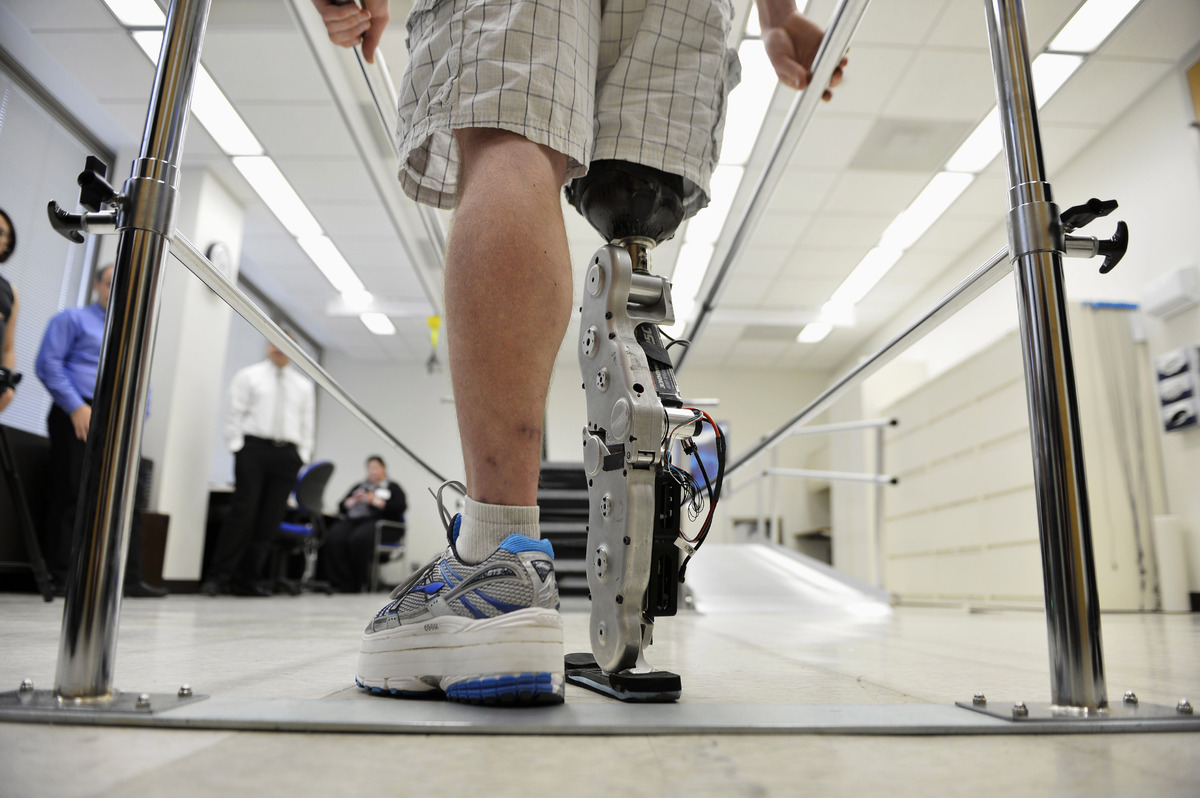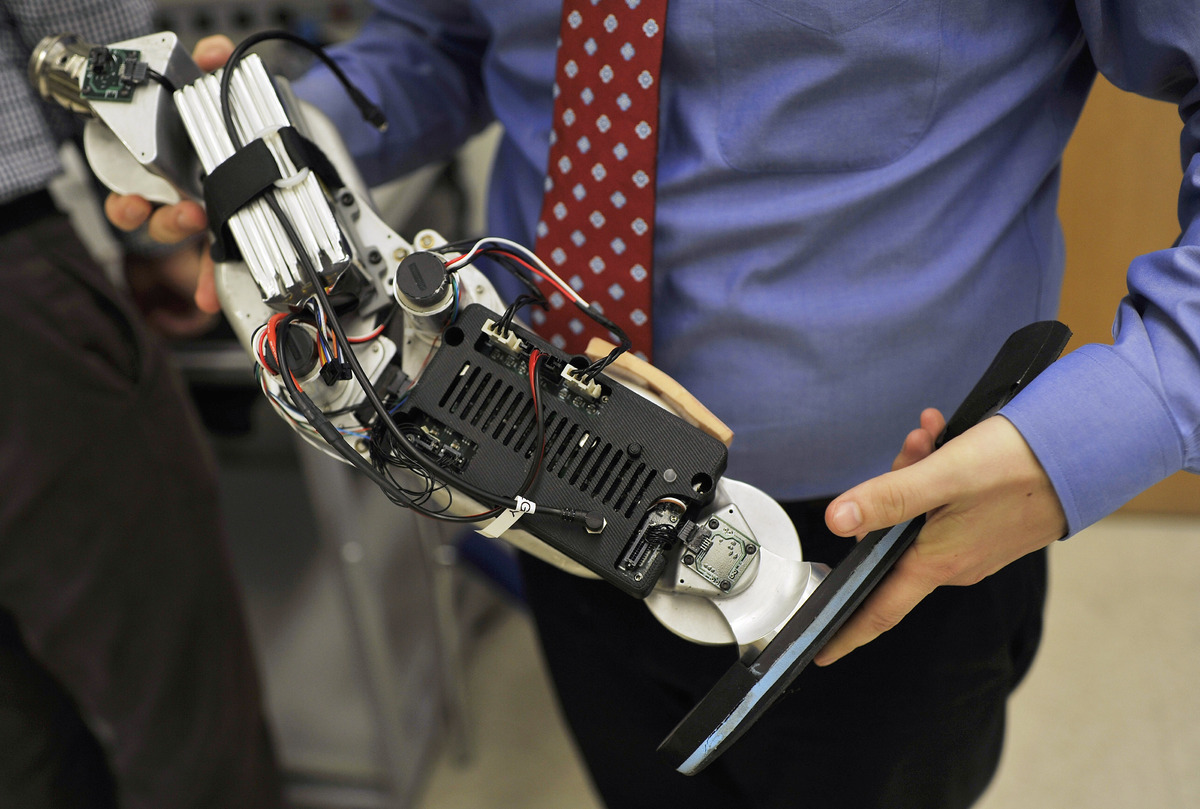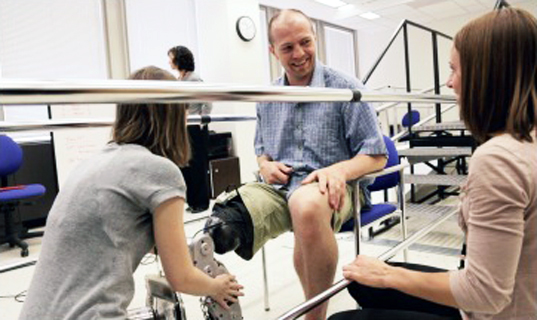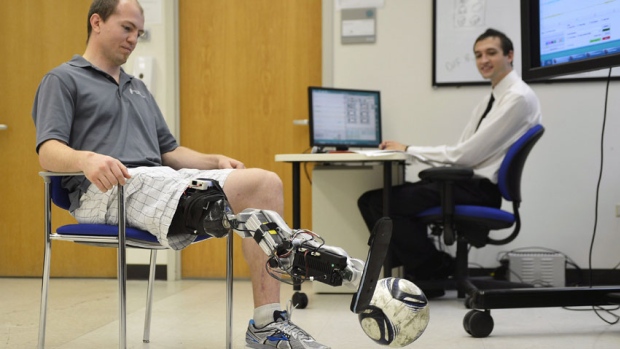First of Its Kind... A Robotic Leg That is Controlled by Thoughts
A team of scientists are getting closer to the holy grail of brain-powered prosthetics by developing the first advanced-movement prosthetic leg that communicates with the wearer’s mind.
A mind-controlled robot leg has passed its test phase and will be available to more than one million leg amputee Americans
Researchers have developed the world's first mind-controlled bionic leg - an innovation that could mean significant improvements in the lives of the estimated 1 million Americans with leg amputations. Previously, only thought-controlled bionic arms were available to amputees.
The new system, developed by scientists at the Rehabilitation Institute of Chicago (RIC), uses neural signals and a specially designed computer program to safely control the limb.
The case study regarding the invention focuses on Zac Vawter, an amputee who underwent a surgery pioneered by RIC and Northwestern University in 2009 designed to redirect nerves from damaged muscle in the patient's amputated limb to muscle located above the knee.
Zac Vawter, who lost his leg below the knee after a motorcycle accident, is the first amputee with a thought-controlled bionic leg
The prosthetic leg is able to move almost like a real leg as it is attached to the nerves of the wearer
Called muscle reinnervation surgery, the procedure made it so whenever the redirected nerves instruct the muscles to contract, this message is received in the form of tiny electrical signals by a sensor on Vawter's leg.
These signals are then decoded and sent in the form of a command to the robotic leg.
Levi Hargrove, the lead scientist behind the research, said:
"This new bionic leg features incredibly intelligent engineering," Levi Hargrove, the lead scientist behind the research, said in a statement.
"It learns and performs activities unprecedented for any leg amputee, including seamless transitions between sitting, walking, ascending and descending stairs and ramps and repositioning the leg while seated."
Last November, Zac Vawter climbed 103 flights of stairs in Chicago's Willis Tower
How it works
When a person thinks about moving their lower limb, a signal from the brain is sent down the spinal cord and through nerves to muscles in the leg, Hargrove said.
But when an amputation occurs, nerve signals that would have gone to the knee or ankle, for instance, aren't able to deliver their message to muscle.
To overcome this problem, the researchers first performed a surgery on Vawter to redirect his nerve signals, so that signals that would have gone to the lower leg instead go to the healthy hamstring muscle, in the top part of his leg.
Have something to say about this? Facebook or Tweet us! We'll feature it on SAYS
SAYS is Malaysia's social news network. Find today's must-share stories, news and videos everyday, produce and brought to you by Malaysian social media users!
 facebook.com
facebook.com
Get all latest news here on SAYS (@SAYSdotMY). Tweet us and and let us know what's happening around you! We'll feature it on SAYS.
